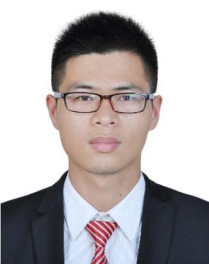Topic: How to identify the dominant microscopic carrier loss mechanisms in polycrystalline thin-film solar cells ?
Speaker: Jianjun Li, researcher, University of New South Wales
Time: 9:00--12:00, July 29th, 2022
Venue: Room 216, Key Lab for Special Functional Materials, Ministry of Education
Tencent meeting: 157-603-873
Organizor: Key Lab for Special Functional Materials, Ministry of Education

Dr. Jianjun Li is an Australian Centre of Advanced Photovoltaic (ACAP) Research Fellow at the School of Photovoltaics and Renewable Energy Engineering (SPREE), University of New South Wales. He received Ph.D. from the Institute of Photoelectronic Thin Film Devices and Technology, Nankai University, China in 2016, and his B.S. degree from Nankai University in 2011. His research focuses on materials science, device physics, and characterization of emerging inorganic photovoltaic materials like chalcopyrite, kesterite, antimony chalcogenides, and their other photoelectronic applications. He has published 40 peer-reviewed journal papers, including Nature Energy, Advanced Materials, and Advanced Energy Materials, with an H-index of 17.
Abstract: Emerging inorganic thin-film solar cells are attracting considerable attention for their huge potential of diverse applications scenarios in the modern and future society. While the power conversion efficiencies of these emerging thin-film solar cells are limited for some reasons, mostly associated with microscopic carrier loss mechanisms. In this seminar, I would like to talk about our recent work published on Nature Energy: How to identify the dominant microscopic carrier loss mechanisms in polycrystalline thin-film solar cells? Using Cu2ZnSnSe4 (CZTSe) as an example, we discuss how multiple micro- and macro-scale characterizations are applied to investigate the most important carrier transport and carrier recombination mechanisms, and how these characterizations are integrated with the 3D device simulations.


